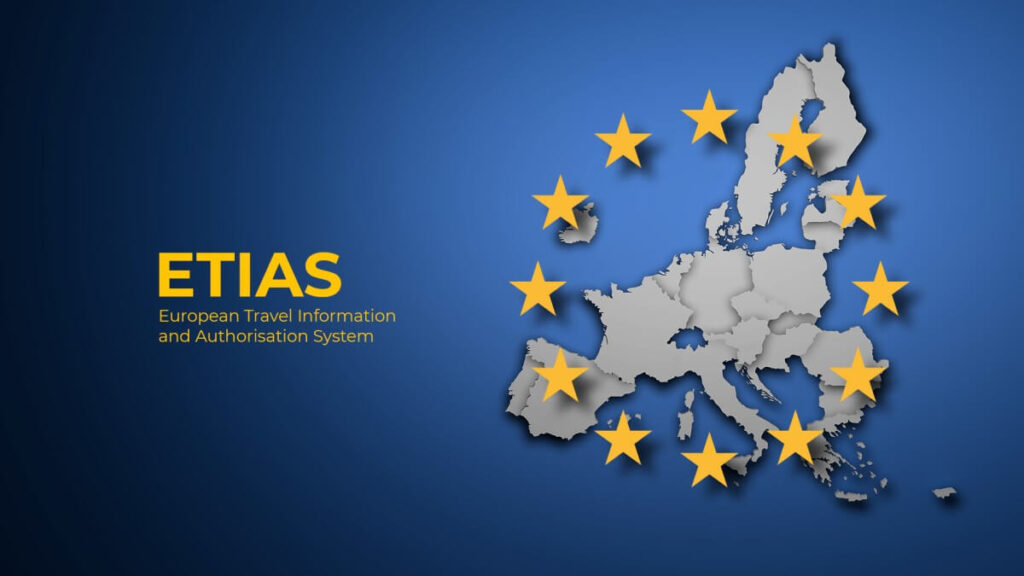Advertiser & Editorial Disclosure: The Bulkhead Seat earns an affiliate commission for anyone approved through the links below. This compensation may impact how and where links appear on this site. We work to provide the best publicly available offers to our readers. We frequently update them, but this site does not include all available offers. Opinions, reviews, analyses & recommendations are the author’s alone, and have not been reviewed, endorsed, or approved by any of these entities.
Big changes are on the horizon for travelers visiting Europe from non-European Union (EU) countries. The EU is moving forward with two updates to its border control systems: the Entry/Exit System (EES) and the European Travel Information and Authorization System (ETIAS). Both are designed to modernize and tighten border security while streamlining entry processes for travelers from visa-exempt countries (including the United States). We now have launch dates for both as well as more information around what travelers can expect.
Entry/Exit System (EES): Launches on October 12th
The Entry/Exit System (EES) is now officially scheduled to start on October 12th, according to the EU’s latest update. The system will replace the manual passport stamping process at EU external borders with a fully automated, biometric-based tracking system. Key features include:
- This will replace passport stamps with digital entry and exit records.
- Applies to non-EU travelers entering the Schengen Area for short stays (up to 90 days in any 180-day period).
- This will include the traveler’s name, entry/exit dates, and biometric data (fingerprints and facial images).
While the system officially launches in October, the EES will be phased in over a 180-day period:
- Initially, only a small percentage of border crossings will require EES registration.
- This percentage will gradually increase over the rollout period until full implementation is achieved by April 10, 2026.
- Biometric collection requirements will also be phased in over this time.
- Exact details on when each phase begins remain unclear, but travelers should prepare for potential delays or adjustments during the transition period.
ETIAS: Delayed Until Late 2026
The European Travel Information and Authorization System (ETIAS) was set to launch this year, but it has been pushed back to Q4 2026 (pending approval by the European Parliament). While the timeline is not yet finalized, EU authorities have confirmed that ETIAS will be implemented several months after EES is fully operational.
What is ETIAS?
If you’re not familiar, ETIAS is a pre-travel authorization system for nationals of over 60 visa-exempt countries. This includes the United States, Canada, Australia, and many others when seeking access to the Schengen Area. Here are some details to know:
- Cost: €20 (~$23 USD) per applicant
- Validity: Three years or until your passport expires (whichever comes first)
- Entries: Multiple entries are permitted
- Stay Duration: Up to 90 days in any 180-day period
- Application Time: Typically processed within minutes, but may take up to 14 days in rare cases
- Confirmation: Sent electronically and linked to your passport so that there is no need to show this at the border
This system is similar to the United States Electronic System for Travel Authorization (ESTA) that is run by US Customs and Border Protection (CBP). It aims to enhance security by screening travelers before they arrive.
Anthony’s Take: While it does not appear complicated and the cost is nominal, this is one more thing to think about when traveling to Europe. This has clearly been designed as a counter to the US ESTA and it should drive some revenue for the EU with the number of Americans and Canadians flocking to Europe .
(Image Credits: European Union and Alexandre Lallemand via Unsplash.)
User Generated Content Disclosure: The Bulkhead Seat encourages constructive discussions, comments, and questions. Responses are not provided by or commissioned by any bank advertisers. These responses have not been reviewed, approved, or endorsed by the bank advertiser. It is not the responsibility of the bank advertiser to respond to comments.
Advertiser & Editorial Disclosure: The Bulkhead Seat earns an affiliate commission for anyone approved through the links above This compensation may impact how and where links appear on this site. We work to provide the best publicly available offers to our readers. We frequently update them, but this site does not include all available offers. Opinions, reviews, analyses & recommendations are the author’s alone, and have not been reviewed, endorsed, or approved by any of these entities.


14 comments
Thanks for the very useful update. I do think the not-visa visa premise is silly (admit it’s a visa and be done with it) but at least it got pushed back again.
How do you think Europeans do when they have to travel to the US, Canada, Australia, New Zealand and now also the UK?
Hi sir how to apply work permit visa
I’m not sure about visa applications. Sorry.
Im going to Austria on 9/2—9/30, do I need anything extra besides my valid US Passport?
You won’t need anything until this is implemented in 2026.
What happens if the officer forgets or misses to register inward or outward entry of a passenger.
I’m going to Spain,Portugal at the end of October into November
Also to Finland in December thru January
Will I need this
EES will be in place by then and nothing needs to be done for that, but ETIAS is late fall.
Traveling to France the first 10 days in October of this year. Will be back before the EES start on October 12, 2025, will still need to complete the EES?
It’s supposed to roll out over a 180-day period. I’m not sure what airports will start right on October 12th. Before the 12th, there should be no issue.
Thank you for updating
We are traveling to France Oct 8, going on to Italy Oct 9 and starting until Nov 1. Will we need to do anything for the EES?
No. This should happen automatically based on airport rollout over 180 days after October 12th.